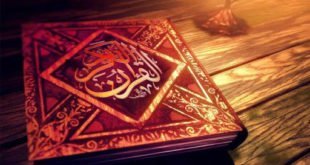The Qur’aanic style clearly portrays that the issuing of three divorces is disliked in Shar’iah. If it ever becomes necessary for someone to separate from his wife, it is sufficient for him to pronounce two divorces only, as the issuing of the third one is neither necessary nor advisable.
Instead of the irrevocable, straight forward divorce, pronounced three times the Qur’aanic style favours the dual divorce, pronounced twice, and when the third divorce is referred to, the Arabic word, “IN” meaning “IF” is used: clearly indicating that one should refrain from pronouncing a third divorce. It is for this reason that Imaam Maalik Alaihir rahmah and many other jurists have referred to the issuing of three divorces as “Talaaqe-Bid’at”, or an innovative divorce.
THE QUR’AANIC METHOD OF DIVORCE
The method of divorce, as understood from the Qur’aan, the ahaadith and the practical examples of the Sahaabah Ridwaanul laahi alaihim ajmaeen, is that when there is no option left in a marriage beside divorce, then the correct way of issuing divorce is to wait for the interval between a wife’s menstruation when no intercourse had taken place, and then pronounce a single divorce. The wife is then left to complete her Iddat at the end of which the marriage would also be broken. This is the best procedure for divorce, which was preferred by the Sahaabah Ridwaanul laahi alaihim ajmaeen.
However, from verse 229 of Sura 2 the Qur’aan, we also gather that it is permissible to issue two divorces: but the word “Murrataan” meaning “twice” guides us to understand that divorce should be pronounced two times in two different intervals (of a woman’s purity), as previously explained and not issued simultaneously for which the expression that could have been used is “At Talaaqu Talaaqaan” meaning, “Divorce is two”, which does not suggest sequence or delay, i.e., one first and the other after some time, as has been conveyed by the word “Murrataan”.
A simple example to illustrate this is :-
When one says: “ Once a father gave his son two rands”, it does not mean that a rand was given two times. Therefore, the jurists explain that by “divorce two times” is meant the two different intervals of a woman’s state of purity.
From the foregoing we understand that the Qur’aan grants permission for the pronouncement of two divorces and that this is the style of divorce that is in accordance with Shar’iah. However when it comes to three divorces (Talaaqs), The style of the Qur’aan portrays a dislike for it and such discouragement also appears in the Ahadeeth of Nabi Sallallaahu alaihi wasallam like for example :
Rasulullah Sallallaahu alaihi wasallam was informed about a man who had divorced his wife by pronouncing three divorces, in one breath, all at once. On hearing this, Nabi Sallallaahu alaihi wasallam stood up in anger and said, “Is the Book of Allah being played around with, even whilst I am in your midst?”
One of the Companions then stood up saying, “Shall I not kill him, O Rasul of Allah?”
Haafiz ibn Qayyim, Haafiz ibn Hajar and Ibn Katheer have all confirmed that this Hadeeth is authentic with sound narrators.
In conclusion, the issuing of three divorces should be avoided at all costs and instead the sunnah method should be resorted to.
 Jamiatul Ulama KZN Council of Muslim Theologians
Jamiatul Ulama KZN Council of Muslim Theologians
